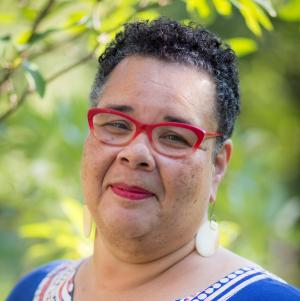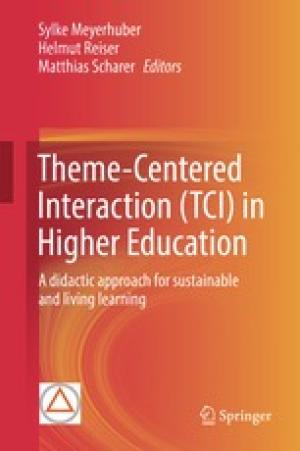Resources
A 2018 course by Mary Lederleitner at Trinity Evangelical Divinity School "helps participants grow in their ability to raise funds for ministry dreams and aspirations."

“I feel like I’m constantly grading now.” My colleague’s comment was offered as a lament over so much more assessment now that our school had transitioned to an online curriculum. That online courses required more grading was a surprise, and a mystery, to me at first too. Why should the delivery format make such a difference to how a course gets graded? There is an answer to that question, and the nature of learning provides the answer. Online learning is learning mediated by distance and time. It doesn’t have the same social component, or the immediacy of interaction, that learning in class does. Going to class—and therefore, presumably, learning—constitutes the primary blocks of a residential student’s day, but learning done by students in an online school is often piled onto or squeezed into a daily schedule that is not otherwise centered around education. Online learning, therefore, occurs in isolation from many of the reinforcements to comprehension, inquiry, and creativity provided by face-to-face environments, e.g., shared space, informal conversation, direct and immediate access to professors, and even simple sensory aids like handouts, refreshments, show-and-tell objects, and rituals used to begin and end class. These sorts of things all contribute, in face-to-face education, to creating a learning environment that marks the moment of learning: “Now, here, learning is happening,” they convey. In other words, they help sustain student engagement. Online instructors must find other ways to achieve what going to class achieves for residential students. We have to design our online courses in ways that grab our students’ attention and keep them motivated as they progress. We learn to employ strategies that encourage students to logon frequently, help them feel present within the online space and online community, provide them with frequent opportunities to verify their understanding of course content, to ask questions, to participate in discussion, to receive feedback, and to see their progress. Frequent, small assessments constitute one of these strategies. They play a role in a larger ecology of learning that has many points and modes of engagement. Certainly, instructors can overload a course with too many little tasks and activities, but, generally speaking, lessons that are chunked into multiple small assignments keep students more engaged than do lessons consisting simply of reading and discussion—leading up to a big test or paper at the end of the course. In addition, when those smaller chunks are graded, students must complete them in order to succeed in the course. Grading creates a point of connection between student and professor, especially if it includes feedback and not just a number. As they accumulate, grades can provide students with a visual picture of their progress. This is the reason why online education can involve so much grading. It’s about engagement. It isn’t necessarily about the need to measure or evaluate every single thing an online student does. One does not even have to award numbers or letter grades each time. (Continually having to decide where student work falls on a grading scale is what tires instructors like my colleague.) The larger point is that student engagement and motivation are keys to successful learning in general, no matter the delivery method. And this is what teaching online, with its seemingly endless assessment, has taught me about learning. There are many studies proving the connection between engagement and learning. Since I cannot do justice to them here, I will close by reflecting on my own experiences as a learner. Like many future academics, motivating myself to learn was never particularly hard and I got to study things that naturally aroused my curiosity. I did not need bells and whistles to make me interested. But there are always exceptions. When learning is obligatory or seems irrelevant, it’s been the graded assignments that have spurred me on. Several years ago, I had to take a course in driver safety to be allowed to shepherd students on field trips. The course didn’t involve any actual driving but, rather, watching videos and taking a test. I was largely bored and disengaged until it was time to be tested. Then my competitive nature kicked in. When I passed with a nearly perfect grade but did not receive 100%, I wanted to take the course over again! To this day, I still remember the driving rule that I got wrong on that test.

This multidisciplinary compilation covers the vast and varied landscape of culturally-aware curriculum and global competence initiatives currently being implemented worldwide by institutions of higher education. With authors hailing from the US, Australia, Canada, Spain, Turkey, the Czech Republic, and the UK, this text is truly global. Despite the multitude of topics, populations, and programs, the universal theme running through each chapter is globalization. Whether the contributor’s focus is on the historical genealogy of a loaded term such as “culture” and the exploration of its uses and misuses, or a call for global competency for students being trained in construction, the combined goal of the text is to encourage those in higher education to push for a culturally-aware curriculum focused on equity and respect and to provide their students with the tools they need to thrive in a global marketplace. There is a myriad of ways to meet these goals; this text itself is a testament to the variety of methodologies and practices currently set up to meet said goals. Changing racial demographics, especially in the US, are highlighted in multiple chapters as one of the many reasons American college students need cultural awareness and competency development programs. With Hispanics now constituting the largest minority population in American colleges at 17 percent , institutions of higher education are feeling the effects of changing populations (112). By 2060, “57 percent of the total population will be from minority groups” (238). More international students are studying in the US, many coming from countries where English is not the official language (“58 percent from China, India, South Korea, and Saudi Arabia”) (24). In the 2014/15 academic school year, “Chinese students made up more than 31 percent of all international students” (309). Not only do international students, as well as international teachers, face linguistic challenges but many come to the US with differing understandings regarding classroom etiquette and cultural norms. Hence, no matter if students are studying abroad, engaging with international students or teachers in their home country, or are themselves from minority groups, globalization affects higher education on many levels. Global education is not limited to study abroad programs and studying abroad does not necessarily result in changed perspectives. As David Starr-Glass notes, one must keep in mind that “student mobility is only a structure” and that “what can lead to a change in student perception and sensitivity, lies not in the structural aspects per se, but in the teaching and learning content of these experiences” (311). According to the volume’s editors, global education leading to cultural competence is ongoing through “interactions with an international student body, study abroad experience, or with technology in which students from different cultures are afforded the opportunity to exchange ideas” (xxi). Chapters featured in this volume focus on particular programs, initiatives, and case studies regarding implementation (dual-language, study abroad, on-campus activities), specific student populations (international, STEM, future educators, and construction professionals), and significant related topics (White Privilege, social justice, civic responsibility). Although global education might often be regarded as relating to external forces, many of the practices developed to increase students’ global competencies and cultural awareness start internally. As the authors of the chapter “Developing Social Justice and Inclusion Competencies” note, courses utilizing self-reflection, “require students to identify and make meaning of their multiple and intersecting social identities” (79). This self-reflective practice is also vital for professionals working in institutions of higher education. Global education demands not only openness to learn about and learn from others, it also requires, as many of these contributors illustrate, students, staff, and faculty to reflect on their own assumptions and experiences. As an academic advisor for foreign language programs at the University of Georgia and a former instructor of religious studies, reflecting on this resource in all of its multidisciplinary and multicultural glory gives me confidence in the efforts being made to educate college students not just according to educational and professional standards but also with the intent to teach them cultural humility. Even critiques of the current models and ethos around global citizenship found in this volume exemplify the thoughtful consideration going into this research. This compendium is an excellent resource for anyone invested in higher education, especially those working to encourage global citizenship among college students.
Co-Sponsored with the Hispanic Theological Initiative A gathering of HTI Fellows to discuss issues about teaching and learning related to syllabi design, professional teaching development, and other issues related to the first years of teaching.
[su_heading]This information is for participants already invited to this program.[/su_heading] [row] [column lg="4" md="4" sm="12" xs="12" ] [su_spacer size="20"] [su_button url=" https://www.wabashcenter.wabash.edu/programs/workshops/travel-and-accommodations/" background="#86b53e" size="3" wide="yes" center="yes" radius="5" text_shadow="0px 0px 0px #FFF" desc="Flights, Lodging, Directions, etc..."]Info on Food, Travel and Accommodations[/su_button] [/column] [column lg="8" md="8" sm="12" xs="12" ] [/column] [/row] [row] [column lg="7" md="7" sm="12" xs="12" ] [text_only_widget] Ground Transportation About a week prior to your travel you will receive an email from Beth Reffett (reffettb@wabash.edu) with airport shuttle information. This email includes the cell phone number of your driver, where to meet, and fellow participants with arrival times. Please print off these instructions and carry them with you. [/text_only_widget] [/column] [column lg="5" md="5" sm="12" xs="12" ] [text_only_widget] Contact Information on Day of Travel Wabash Center: 800-655-7117 After Hours: as directed in the travel email Venue (Trippet Hall): 765-361-6490 [su_spacer size="20"] The Travel Authority (to change flights) 800-837-6568 Tami Brubaker tami.brubaker@altour.com Thommi Weliever thommi.weliever@altour.com [/text_only_widget] [/column] [/row]

I have a confession to make. For the longest time I have approached distance learning as the second best way to teach. I thought of it as a necessary evil in order to deliver theological education to those who could not receive instruction through the traditional face-to-face (hence F2F) classroom. Consequently, I approached teaching online as an effort to approximate the F2F experience but feeling that no matter what I do, I’ll always fall short of the “real thing.” I have since changed my mind. In my experience designing and implementing an online course to teach Biblical Greek for seminary students, I have discovered that there are principles and practices which do more than simply approximate the F2F experience—they surpass it. So what practices in the F2F setting can and should be approximated online? Here are two quick suggestions: 1) Create instructional videos as a means for students to receive course content. There are no short cuts to teaching the vocabulary, grammar, and syntax of any language. Over the course of one summer, I developed over 80 instructional videos of approximately 7-10 minutes each to cover the entire scope of beginning Greek grammar. Across two semesters, students will watch me on YouTube explain the pronunciation scheme of the Greek alphabet, read the biblical text out loud, and then address nouns, verbs, and other parts of speech. The instructional videos are the backbone to the content of the course. 2) Have students write out their homework assignments in a “messy” way. The textbook I use for the course is William Mounce’s The Basics of Biblical Greek. I ask students to work through the homework exercises by hand since no electronic version of the Greek workbook is currently available by the publisher. Students do the work in a “messy” way: they scribble notes, circle words, draw arrows, cross out and self-correct their assignments. Then they scan their work and upload it as a PDF onto the course management system (hence CMS) for grading. The “messy” way of completing the homework adds a tactile, motor-memory component to learning that many find helpful. It is worth trying to approximate this online as much as possible. When, or if, an electronic version of the workbook exercises becomes available from publishers, students can easily use an iPad or other tablet device plus stylus to approximate the “messy” by-hand learning experience. Now here are two methods of online instruction that I think supersede the F2F experience: 1) Assign audio and video recording exercises to students to upload for instructor review. Currently I am teaching Greek online and on campus. To my surprise, I have found that, overall, my online students read biblical Greek out loud better than the on-campus students. In the on-campus classroom, we practice pronouncing Greek during the first weeks of the course by reading 1 John 1 out loud. Students take turns reading a verse and we make the rounds until we corporately finish the whole text. For the online course, students don’t take turns reading just a few verses of 1 John 1. They have to read large sections of it on their own, record their reading, and upload it onto the CMS for me to grade. It takes time, but I listen to their recordings and write out my comments, or make my own recording, to send back to them so they can adjust their pronunciation. Every week, online students complete an A/V recording assignment but the on-campus class does not. As a result, the former read Greek better. 2) Form student-to-student cohorts. I cannot take credit for what follows. On their own, my online students formed a Facebook group where they exchange best study techniques, commiserate about the difficulties of the language, answer questions for one another, and share resources. While on-campus students also form study groups, these are typically much smaller in size, meet less frequently, and do not involve the entire class. The Facebook group invites the entire class to participate and they do. The level of collaboration is much more intense. I may even suggest to the on-campus students that they form online cohorts. Sometimes commuters don’t have access to study groups. Forming a Facebook cohort would allow them to join. These are just a few suggestions I offer as I stumble my way through teaching Greek online. I have been just as much a learner as an instructor in this journey. The pedagogical discoveries have been exhilarating!
[su_heading]This information is for participants already invited to this program.[/su_heading] [row] [column lg="4" md="4" sm="12" xs="12" ] [su_spacer size="20"] [su_button url=" https://www.wabashcenter.wabash.edu/programs/workshops/travel-and-accommodations/" background="#86b53e" size="3" wide="yes" center="yes" radius="5" text_shadow="0px 0px 0px #FFF" desc="Flights, Lodging, Directions, etc..."]Info on Food, Travel and Accommodations[/su_button] [/column] [column lg="8" md="8" sm="12" xs="12" ] [/column] [/row] [row] [column lg="7" md="7" sm="12" xs="12" ] [text_only_widget] Ground Transportation About a week prior to your travel you will receive an email from Beth Reffett (reffettb@wabash.edu) with airport shuttle information. This email includes the cell phone number of your driver, where to meet, and fellow participants with arrival times. Please print off these instructions and carry them with you. [/text_only_widget] [/column] [column lg="5" md="5" sm="12" xs="12" ] [text_only_widget] Contact Information on Day of Travel Wabash Center: 800-655-7117 After Hours: as directed in the travel email Venue The Alexander 317-624-8200 [su_spacer size="20"] The Travel Authority (to change flights) 800-837-6568 Tami Brubaker tami.brubaker@altour.com Thommi Weliever thommi.weliever@altour.com [/text_only_widget] [/column] [/row]

“Grab him!” they shouted. “And cage the big dope! Lasso his stomach with ten miles of rope! Tie the knots tight so he’ll never shake loose! Then dunk that dumb speck in the Beezle-Nut juice! Horton fought back with great vigor and vim But the Wickersham gang was too many for him. They beat him! They mauled him! They started to haul Him into his cage! But he managed to call To the Mayor: “Don’t give up! I believe in you all! A person’s a person, no matter how small! And you very small persons will not have to die If you make yourselves heard! So come on, now, and TRY!” Horton Hears a Who! by Dr. Seuss Horton Hears a Who! is a children’s story book by the dependable philosopher Dr. Seuss. In the parable, Horton the elephant was, on May 15th, having a bath in the jungle. As Horton is splashing and enjoying the moment, he hears a small noise–a faint voice calling for help. The rest of the tale is about Horton risking his life to save the town of Who-ville from those in the jungle who would destroy it. Other characters could not, or would not, hear the Who-villians because they were small in size and their voices were faint. Who-ville is so tiny it can fit on a speck of dust. Dr. Seuss describes the smallness of Who-ville this way--“The elephant stretched his great trunk through the air, And he lifted the dust speck and carried it over, And placed it down, safe, on a very soft clover.” Unlike the other characters of the parable, Horton believed, “A person’s a person, no matter how small.” This is, unfortunately, a contested idea in the story, as well as in U.S. society. In our conversation on oppression, systemic hatred and violence, perhaps the whimsy of Dr. Seuss allows us to enter into this radical notion of inclusion, compassion, and acceptance with fresh eyes and child-like wonder. Perhaps whimsy can be used in our classrooms to teach people the worth of all humanity. Rekindling our imaginations for the work of empathy is needed, but fraught with danger. Imagination shackled to hatred is as powerful as imagination perpetuating liberation, justice, and love. Evil itself can be imaginative. The power of imagination is recognized by those who would oppress as it is by those who would liberate. Hatred recruits imagination for propaganda and manipulation. Oppression and its many forms of torture are often creative, imaginative–yet are a machine of hopelessness. We cannot naively think that if it is imaginative it is pointing toward freedom. Dr. Seuss, the czar of whimsy and imagination is certainly a compass pointing us toward freedom. Horton Hears a Who! is the life lesson of advocacy and sacrifice. Teaching for awareness of systemic dehumanization, teaching strategies for re-imagining equitable communities are sometimes enriched with a little help from Dr. Seuss. For those who believe in and teach toward healthy communities, healthy families, healthy individuals and, for our purposes, healthy classrooms, the social structures that are produced by racism, sexism, classism, homophobia, (etc.) are an illogical, un-reasonable, and counter-intuitive situation. Oppression truncates the imagination of the oppressor. White supremacy and patriarchy distort reality. Internalizing the lie of superiority thins the soul and weakens judgement. Imagination itself, then, is constrained by the maintenance and management of hatred. An imagination tasked with the perpetuation of hatred becomes one more blunt and dangerous tool. Dr. Seuss’s brilliant tale provides insight. Students who are reticent, unable, incapable, or simply resistant to the conversation on racism, sexism, classism, and homophobia find Dr. Seuss non-threatening and approachable. The whimsy of Dr. Seuss allows students to lower their guard–this is a good thing. Dr. Seuss reminds white students and male students of the imagination they had as children before white supremacy and patriarchy stripped them bare and robbed them. This semester, I am partnering with the good doctor in this way. My instructions for an in-class activity are: Place your feet flat on the floor, take everything out of your hands and relax. Breathe deeply. Breath in through your nose and out through your mouth and relax. Get out your reading assignment, Horton Hears A Who! by Dr. Seuss (it’s on the syllabus as required reading). Sit together in a small group (2 or 3 people, no more than 4) and slowly re-read the book aloud to one another. As individuals, with crayon, magic marker or colored pen and 8.5 X 11 paper consider these questions: In your family, church, community, region, or country–who are those who are treated as the small people? Who are the people who are unheard, unseen, or ignored? Who are the small people for which bias and prejudice is often heaped? Who are the small people who struggle to be heard? Be specific–make a list. (I supply the art materials.) Gather together with your small group, and without discussing the rationale, compile one list of all of the groups of small peoples recorded in each individual list. Bring a list with no redundancies. Record your group’s compiled list on a poster sized paper for display. Display the lists and discuss with entire class these kinds of questions: Why are these groups of people considered “small” in society? Why is bias and prejudice foisted upon these particular groups of persons? Is there a common understanding of who is “small”? Are there any groups to be added to the list? Are there any patterns of prejudice or discrimination which we can see in our lists? Accept all answers (within the bounds of sensibility). Next, I re-read aloud the above quote, and then instruct: Sit with this quote, reread it and let it soak in. Breathe deeply as you sit and think. Read our list of “small people” and breathe. Think of your interactions with or/as these oppressed brothers and sisters. Keep breathing as you sit quietly. (At least 10 minutes of silence, more if they can take it.) For which of these groups of small persons are you and your community willing or able to be a Horton? For whom will you and your community fight? For whom will you and your community take a beating? For whom will you and your community be mauled and caged? For whom will you shout encouragement and freedom? Sit in silence; take notes of your own thoughts if you so choose. (I do not ask students to report on this reflection.) Now, consider and discuss aloud: (a) What is at stake if you do not speak for the small people? (b) What is a risk if you do speak for the small people? Discuss for as long as there is energy for this inquiry. In this instance, the professor’s role is primarily listening, clarifying and, if needed, introducing vocabulary to elevate the conversation. With fresh paper, draw the kind of courage which would be necessary for you and your community should you choose to advocate or should you choose to re-invest in your advocacy of hearing and fighting for the small people. You may choose to work on individual or collaborative drawings. We will create a gallery of your drawings. The title of our gallery display is “A Person’s a Person, No Matter How Small!” Whether courage can be taught is one of my confounding meta-reflection questions. My answer today is: only if it can be imagined. The last step of this reflection is the point of the exercise; we must be able to imagine ourselves as people of courage if we are to do this risky, treacherous work of raising consciousness, creating relevant and timely strategies for eradication of oppression and learning how to heal the wounds of dehumanization and systemic hatred.

This book presents thoughts on and experiences with the introduction of Theme-centered Interaction (TCI) into academia. TCI is a systematic didactic, ‘living learning’ approach originally developed by social psychologist and pedagogue Ruth C. Cohn. The book explains and introduces the method, attitude and theory of TCI to a broader, higher education audience and relates it to such questions as: How does a teacher in academia achieve a lively and engaging atmosphere in their seminars? How do young academics as leaders-to-be learn how to act socially sustainably in groups? Using practical examples, the book shows how TCI can work in higher education to achieve participation and integration, reflectivity and humane connectedness of academic teachers and students, and professional development of senior and junior academics. (From the Publisher)

In a recent study, my research group at Harding University explored how a person’s learning context and personal experiences contribute to learning in an online course (Westbrook, McGaughy, and McDonald, 2018). The analysis highlighted the importance of experience as a resource for learning. In his book Nothing Never Happens, John D. Hendrix (2004) provides a “Sunday School” teaching model that draws from experiential learning theory (see 18-19). Hendrix’s model resembles Kolb’s theory: both focus on the inward active mind of the student and the outward active behavior that leads to learning (see Kolb, 1984, 40-60). Hendrix divides the experiential learning process into four domains and uses terminology that will be easily understood in a ministry context. When I was first introduced to experiential learning theory, as well as to Hendrix’s model, I was a seminary student who was in the beginning stages of learning how to develop online courses for Harding. At that time, it seemed to me that this cycle of experience, exegesis (or course content), reflection, and application would nicely fit an online, asynchronous learning design. Now, 12 years later, this model has yielded not only successful student learning outcomes time and again, but also students who have expressed appreciation for how much they “related to” and “got something out of” their courses. In the paragraphs below, I’ll share how the model works online. Experience The experience of the learner can be something that happened in the past or something that is happening in the present in the student’s world. Everyone brings some kind of experience to learning spaces, and it’s the job of the course designer and facilitator to help the student tap into these experiences for educational purposes. In Hendrix’s words, experiences provide the “hook” onto which new learning materials may hang. When designing your online course, consider how you might activate the connection between your students and the course content. Encourage students to consider past activities that relate in some way to the learning outcomes of the course. Ask them to share something about their backgrounds. Allow them to share why they want to take your course. Write your discussion questions in such a way that requires them to dip into their own worlds and share them with the rest of the class. Furthermore, create assignments that create new experiences, such as local field trips, conversations with friends and family, interviews with colleagues, or some other type of assignment that opens students’ eyes to the valuable lessons surrounding them. Exegesis (Content) Exegesis is the “stuff” of the course. While the word “exegesis” suits Hendrix’s model for a class that centered on a biblical text, I prefer to use “content” in relation to general online course design. Educators should rest assured that no course content will be harmed or minimized in the creation of an online course. In fact, online courses, especially asynchronous ones often have more pages to read and more videos to watch than traditional classes due to the desire to replace classroom time with reading and viewing time. Providing the appropriate quality and quantity of content is important, but the job doesn’t end here. An experiential online course does more than transmit data to students’ computers. Reflection I like to define reflection as the process through which a student internalizes the course content. Another way to say this might be that it is how a student applies the principles and lessons of the content to one’s life. There are multiple forms of activities that encourage student reflection, such as journaling, concept maps, and personal essays. Any activity that helps students relate personally to what they are learning meet this goal of reflection, especially if the activity encourages metacognition, or thinking about their own thinking. Because of my commitment to social learning, I find great value in discussion boards that prompt personal reflection. Application In contrast to reflection, the application space encourages students to apply what they are learning outside themselves. In short, they are to apply the principles and lessons of the course to their real-world context. As with reflection, I prefer to create prompts in a discussion board that help students see the relevancy of the course to the world beyond the course. This may come in the form of a case study, a hot topic question, or some principle that has broad implications. A summative assignment in which students create real-world solutions with course principles is a great way to help students connect theory with praxis. Experiential Online Learning Model When brought together, these four learning domains create an enriching learning experience. Students at a distance become personally invested in their learning because they have made a personal connection with it. They demonstrate that they have learned content because they are asked to analyze, synthesize, and sometimes create something new with what they have learned. When they reflect on course principles, they internalize what they are learning and discover personal relevancy. By applying what they learn to their contexts, students learn to value the real-world relevancy of their course. This basic four-part model transforms flat, digital correspondence courses into a dynamic, life-developing, learning environment.
Wabash Center Staff Contact
Sarah Farmer, Ph.D
Associate Director
Wabash Center
farmers@wabash.edu